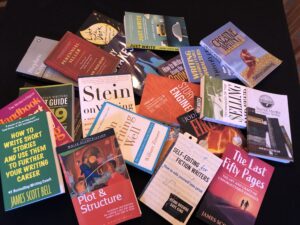
I can’t change the direction of the wind, but I can adjust my sails to always reach my destination. –Jimmy Dean
* * *
Did you know the deadliest aviation accident in history happened on the ground? Yes, you read that correctly. It occurred in 1977 when two 747’s collided in dense fog on a runway in the Canary Islands. Here’s how it happened:
An incident at the airport on Gran Canaria Island had diverted aircraft to the smaller Los Rodeos Airport on Tenerife Island. The Los Rodeos Airport had only one runway and an adjacent parallel taxiway with several smaller taxiways connecting the two. Because of the increase in aircraft that had landed at Los Rodeos, several aircraft were parked on the taxiway.
Two 747’s were lined up at one end of the taxiway, ready to depart. A KLM aircraft was to be first, followed by a PanAm flight. Because of the wind direction, each aircraft would have to move from its current position to the opposite end of the runway, but they couldn’t use the main taxiway because it was blocked by other aircraft.
An air traffic controller in the Los Rodeos tower instructed the KLM plane to taxi down the runway to the end and turn 180° in preparation for takeoff. While the KLM plane was taxiing, the controller told the PanAm plane to taxi on the same runway (which would put it behind the KLM) and then exit at a connecting taxiway. That way, the PanAm plane would be off the runway before the KLM started its takeoff roll.
Because of the fog, the crews of the two planes could not see each other, and the air traffic controller could not see the planes. They were relying on accurate communication to guide their movements. If the crews of both planes had obeyed the controller’s instructions, the accident would not have happened.
The KLM completed its taxi and turning maneuver and was positioned at the end of the runway. Now, an aircraft must have specific clearance from ATC before starting its takeoff roll. The tower never gave the KLM flight clearance to take off, but the captain of the KLM plane thought he had been given the okay. Because of his misunderstanding and his inability to see clearly, the giant 747 began barreling down the runway, unaware that the other plane was in its path.
The takeoff plane was traveling at approximately 160 mph when the crew spotted the other plane dead ahead. They were only one hundred meters apart. There was no time to stop or swerve to avoid the other plane. The captain of the takeoff plane pulled the nose up sharply in an effort to “leapfrog” over the other one. He didn’t make it. The lower part of the KLM aircraft struck the PanAm plane and crashed onto the runway, exploding in a huge fireball.
Although the crews of both planes were experienced, five hundred and eighty-three people died in that accident. All the people on the KLM flight perished, and most of the passengers on the PanAm plane also died. And it happened because the captain of the KLM plane lacked “situational awareness”, or the ability to fully understand his environment. He acted on an assumption that the runway was clear. He was wrong.
* * *

Situational awareness applies to many aspects of life, not just flying. Fortunately for authors, lack of such an awareness will not endanger our lives, but it just might endanger our livelihoods!
So what is situational awareness for writers? Most writers (I hope) know what they want out of writing. It may be fame, financial success, independence, self-fulfillment, a way to touch other people’s lives, or just the experience of writing a very good book. But in order to achieve his/her goals, the writer has to know what the current landscape is. After all, if you don’t know where you are, how can you figure out how to get where you’re going?
If you’re a pilot, you depend on the air traffic controller to direct your flight. When you drive, you may use your car’s GPS system to get you to your destination. For those of us who are new to publishing, we rely on experts in the field to lead us. Add to that the notion that the publishing world keeps shifting beneath our feet, it’s more important than ever to be well-informed.
When I began writing my first novel, I understood early on that I needed an editor/mentor to help guide me. Imagine my surprise when she told me my omniscient narrator was out of style and I’d have to take a different approach. After I got over my “Well, it’s my book and that’s the way I want to do it” reaction, I realized I didn’t understand the big picture of where I was in this new world. I needed a map.
Fortunately for me, the first two resources that were recommended to me were Plot and Structure by James Scott Bell and Self-editing for Fiction Writers by Renni Browne and Dave King. Along with my editor, these books laid the groundwork for my moving forward.
Luckily, authors have an abundance of good information in craft books, podcasts, blogs, and a semi-infinite number of online resources. The information is there. We just have to take advantage of it.
Whatever methods you use to get you where you want to go, best wishes for a successful journey and a happy landing!

* * *
So TKZers: What are your writing goals? What tools do you use to get you to your destination? Books? Blogs? Podcasts? Courses?
* * *
 Private pilot Cassie Deakin has her feet firmly planted in the air. But when she lands on the ground and has to help disentangle a murder mystery, the landscape isn’t nearly so friendly.
Private pilot Cassie Deakin has her feet firmly planted in the air. But when she lands on the ground and has to help disentangle a murder mystery, the landscape isn’t nearly so friendly.
Buy on Amazon, Barnes & Noble, Kobo, Google Play, or Apple Books.
